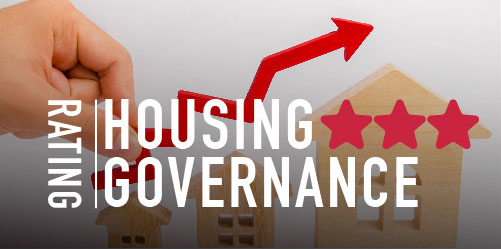A governance model is the structure which allows Boards to make decisions. It facilitates passing resolutions in an effective, organised manner.
Governance models are not a ‘one-size-fits-all’. Every organisation has their own projects and aspirations. As a result, every organisation should have their own way of implementing change.
The processes and systems you employ can shape the resulting policies. Put time in at the beginning to understand your goals and the best way of achieving them.
To help you establish an effective structure, we’ve put together five different Board governance models:
Traditional
This is the oldest form of governance model and has endured for hundreds of years. In this model, the Board is responsible for strategic planning and oversees committees for different aspects of business (such as finance and HR). Most of the management is delegated to the Executive Director.
The Board is considered a legal ‘entity’ that owns the company and so should always speak with one voice.
Some see the traditional model as outdated as it has been around for so long. One significant drawback is that this model is quite minimal in the guidance it gives and requires a lot of work on behalf of the organisation.
Companies must work out their own expectations when it comes to accountability and delegation. For example, the accountability of the Executive Director should be explicitly outlined in the company articles.
However, it has also endured for a reason. In smaller companies, it is simple and easy to set up.
Carver Model
Also known as the Policy Model, this is one of the most popular forms of Board for not-for-profit organisations. Carver encourages Boards to separate the ends from the means.
Once they have identified these ends, they are responsible for hiring a suitable CEO to achieve them. Beyond this point, the CEO has a high level of responsibility.
This model relies on giving a lot of trust to the CEO. The Board creates guidelines and limitations but does not inform their course of action. As Board members must simply ‘trust’ the CEO’s actions, they may be left in the dark on the justification for their strategic plan.
As with most parts of business, the Carver model can be a great system if it works. A capable CEO can transform an organisation - and the Carver model allows them to exercise their full wisdom.
However, it can be risky with the wrong individual. The Board may spend all their time working on policies which the CEO does not have the skills to achieve.
Consensus Model
In a Consensus Model, the group makes decisions together and all members of the Board are equal. They must commit to finding a solution which satisfies every party. They can then hold discussions and make decisions on equal terms.
This type of model is commonly seen amongst corporations with no major shareholders. It can be a useful way to ensure no one has too much control. Most Boards make decisions by going with the majority but a Consensus Model encourages the team not to settle.
However, a Consensus Model can prove difficult when there are disagreements. The internal processes can become longer and making resolutions can get complicated. Other models with a clearer hierarchy may support more efficient decision-making.
It also requires each member of the Board to be equally committed to the company. They should be respectful of each other’s perspectives. This is important in every Board, but it is particularly significant in this model.
Ideally, each member of the Board should be equally knowledgeable on the subjects they are debating. This is generally impossible. Some members will have certain expertise that a Consensus Model may undermine.
Advisory Model
An Advisory Model is where an Executive Director is at the very centre of the business. It is usually seen in start-ups or not-for-profits. The Board exists to provide advice and support.
As the name suggests, Board members primarily act as advisors. They bring developed professional skills to fulfil the mission set out by the Executive Director (who is usually the founder). For this reason, they should each have unique expertise and experience.
Although there are some similarities between the Advisory Model and the Traditional Model, the influence of the Executive Director is much more complete in this model. They select Board members and dominate proceedings.
In many cases, the Advisory Model may exist for compliance purposes. The existence of a Board is a legal requirement in some countries. The Executive Director has de facto control over the organisation but the Board gives them a sense of legitimacy.
Cortex Model
The Cortex Model encourages the Board to think about why their organisation exists. They should focus on the outcomes in terms of concrete values. Accountability is key in this model as the Board must clearly outline their expectations.
In this model, they should recognise the value of the organisation to their shareholders and stakeholders.
They should incorporate a clear accountability framework. This means that their internal processes can be open and transparent. Unlike other models such as the Traditional Model and the Advisory Model, performance is assessed directly. In a Cortex Model, outcomes should be quantifiable.
This model is useful for Boards that have a high degree of technical knowledge. If they are specialists in their field, they will be aware of what is reasonable to expect of their staff.
However, Boards in smaller companies or not-for-profits may struggle to recognise reasonable expectations.
How Can a Board Portal Help You Implement an Effective Governance Structure?
No matter which governance structure you choose, you need to ensure efficiency and good communication. A Board portal like Convene can support you in designing the best structure for your organisation.
The comprehensive software was conceived to streamline communication. From crafting the meeting minutes, to creating a clear audit trail, our features can simplify your internal processes. Read our customer success stories or book a free trial today!







